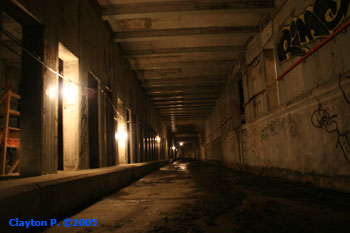 Over the last seven years, two questions from readers appear most often in my inbox. Once involves the Q train. What will happen, Queens residents wonder, when Phase 1 of the Second Ave. Subway opens and the Q heads to the Upper East Side instead of Astoria? The MTA hasn’t said yet what their plans are for the routing, but I’ve long believed that the W will return to service in some form. Astoria won’t lose train service, and we’ll probably see some trains terminate at Whitehall and some cross the Manhattan Bridge from both lines.
Over the last seven years, two questions from readers appear most often in my inbox. Once involves the Q train. What will happen, Queens residents wonder, when Phase 1 of the Second Ave. Subway opens and the Q heads to the Upper East Side instead of Astoria? The MTA hasn’t said yet what their plans are for the routing, but I’ve long believed that the W will return to service in some form. Astoria won’t lose train service, and we’ll probably see some trains terminate at Whitehall and some cross the Manhattan Bridge from both lines.
The second question always concerns future phases of the subway line. Now that we’re a little over three years away from the official launch of a subway line that’s been in the planning stages since the waning days of World War I, everyone wants to know what’s next. Will the MTA build out Phase 2? When will the subway reach Hanover Square and the South St. Seaport? What about extensions in the Bronx or Brooklyn or a spur across 125th St. in Manhattan?
Current MTA head Tom Prendergast said he hopes the full line is finished by 2035 — which would be close to the 100th anniversary of the start of construction — but odds are good he won’t be in the job that long. So what is next? Recently, Dana Rubinstein, Capital New York’s transit reporter, called me with exactly those queries. She was working on a longer piece about the future of the Second Ave. Subway and asked all the right questions about the project’s future. The piece hit the Internet on Wednesday evening and contains some juicy bits for those keeping a close eye on the Second Ave. sagas.
First up is a brief tidbit about the MTA’s future plans. As I’ve noted before, the next phases of the Second Ave. Subway have been noticeably absent from the agency’s latest round of planning documents. The full line gets a mention in the 20-Year Needs Assessment, but the capital planning has focused around behind-the-scenes state-of-good-repair work. Still, that doesn’t mean the MTA isn’t at least thinking about the future subway.
MTA spokesman Adam Lisberg told Rubinstein that the agency will “update the environmental impact statement in order to do Phase II, because it was done years ago and we want to make sure that all of the conditions still apply.” Lisberg doesn’t know when this update will happen, but it’s something that the MTA should consider starting soon. The FEIS was published in May of 2004, and most of the work for that document had been completed over the previous five years. At least, the MTA will have to issue a Statement of No Change will supporting materials. (For what it’s worth, Lisberg also said that Phase 2 doesn’t necessarily have to come next, but considering the practical connection Phase 2 offers at 125th St. and the engineering complexities of Phases 3 and 4, I’d bet real money that Phase 2 will be next.)
Beyond that, though, there are some very practical reasons to continue construction, and these reasons cast doubt on the wisdom of the current phased approach. Rubinstein writes:
At a recent breakfast, I asked Tom Prendergast, the authority’s new chairman, whether funding for the Second Avenue Subway Phase II would be in that capital plan. “Yes, I think one of the things that we need to be able to do is for the system expansion projects, either complete them or continue on the road to completion,” he said. “If you take a look at the fact that the original bond issue for the Second Avenue Subway was 1936, you know, it would be nice to be able to get that project done within 100 years of when it was first thought of.”
…Advocates argue, optimistically, that the next phase ought to begin as soon as the first one is completed so as to avoid having to re-alienate the neighborhoods the subway will be serving. “If everyone goes home, you have to destruct the area all over again,” said [the RPA’s Richard] Barone. “It takes years to start all over again.”
There are other reasons to believe that starting up again, once the construction has stopped, is a good idea. “What is more of a factor is keeping the project staff in place” who have built up the necessary expertise to build a subway through a very dense part of Manhattan, according to Lisberg.
For the MTA, the phased approach has proven costly because the agency is going to have to build out another launch box and reengage tunnel boring machines. That’s the bargain they made with Sheldon Silver though to get Phase 1 started. Losing the institutional memory and the infrastructure to build a subway system would be even more costly.
In speaking with Rubinstein, I thought that a 50-50 chance of Phase 2 starting soon after Phase 1 was optimistic, and I’ll stand by that assessment. Rep. Carolyn Maloney has made some noises about continuing the project, but until the grants are in place and the studies are completed, construction will dry up when Phase 1 is finished. Will the Second Ave. Subway be anything more than a stub or can Manhattan finally, after a century, get the subway line it needs?





